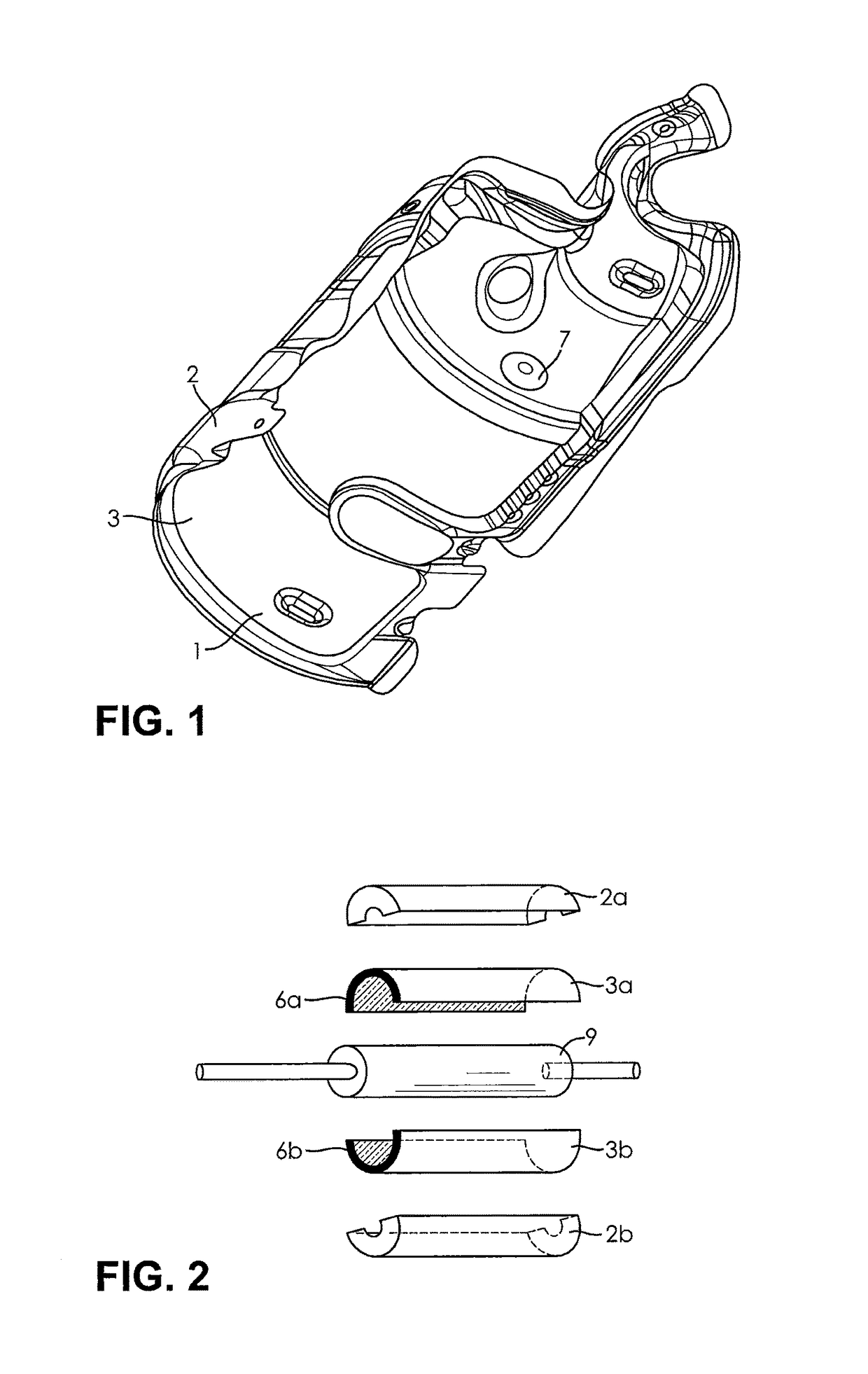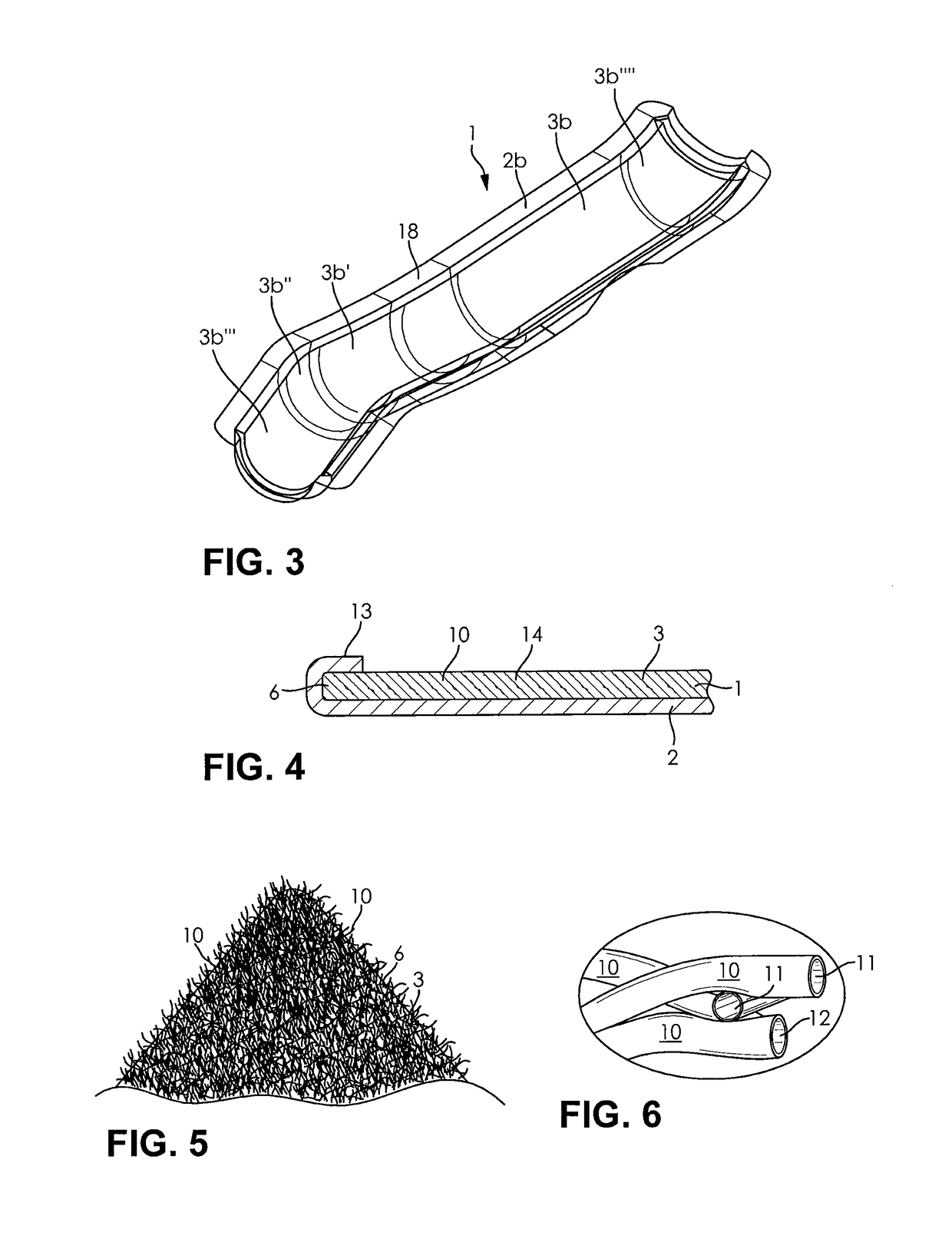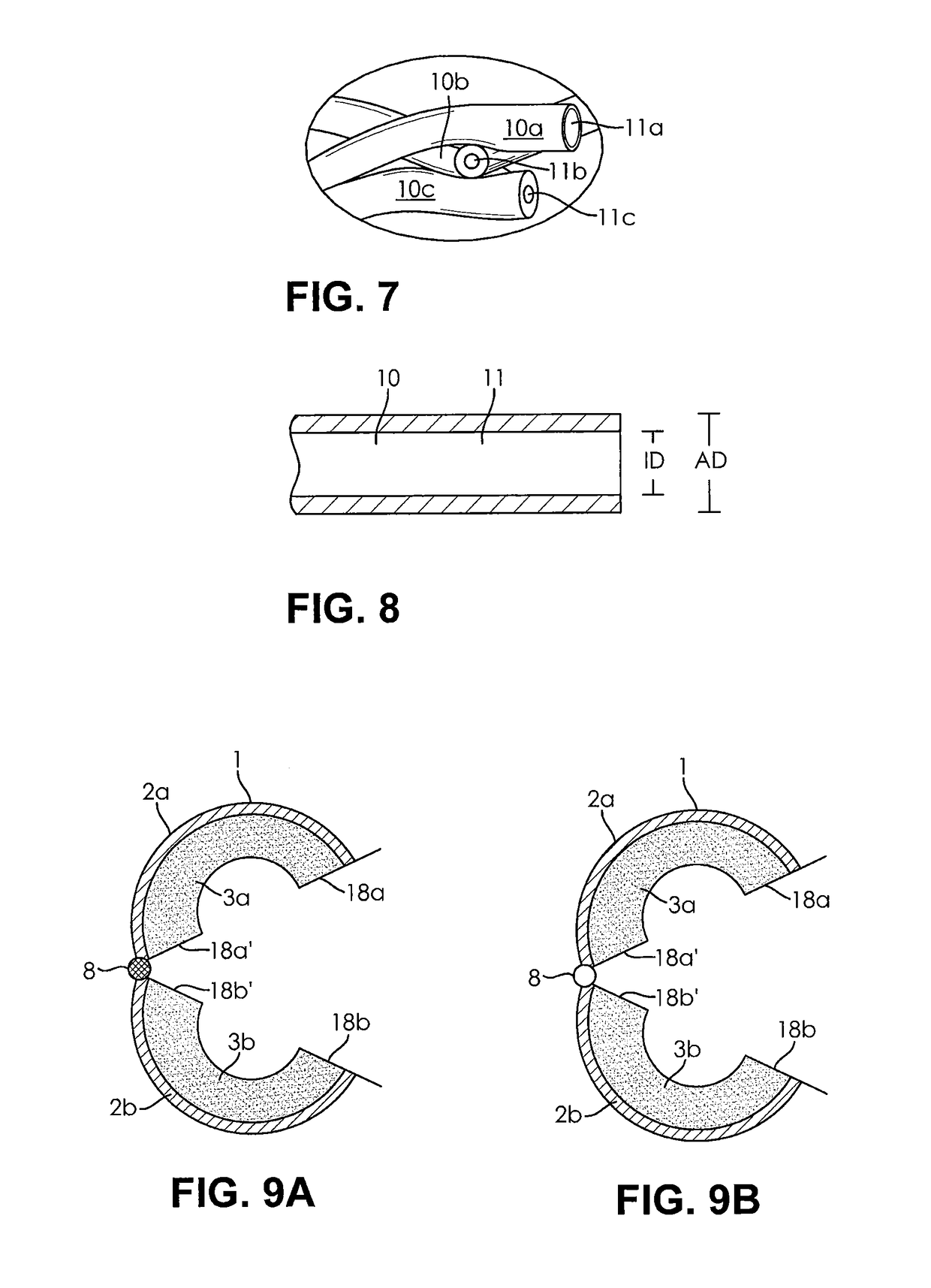Heat shield and system with heat shield of this type
a heat shield and heat shield technology, applied in the field of heat shields, can solve the problems of increasing the space requirement of heat shields, heavy, and only offering limited insulating power, and achieve the effects of reducing density, increasing bending strength, and increasing elasticity
- Summary
- Abstract
- Description
- Claims
- Application Information
AI Technical Summary
Benefits of technology
Problems solved by technology
Method used
Image
Examples
Embodiment Construction
[0037]FIG. 1 is a plan view of the inside of a heat shield 1 with a sheet metal layer 2 and an insulating layer 3. The view in FIG. 1 is a plan view of the inside of the curved heat shield 1 on the exposed surface of the insulating layer 3. Openings 7 extend through the sheet metal layer 2 that covers the insulating layer 3 on the side away from the viewer and through the insulating layer 3, which are in the form of screw holes, for example.
[0038]FIG. 2 illustrates a system claimed by the invention with a heat shield claimed by the invention as illustrated in FIG. 1, in a schematic view in a combination view with an exhaust gas treatment system as the component 9, the hot areas of which are to be shielded. In this exploded view, the component 9 is surrounded and covered by two half-shells 3a and 3b of the insulating material as an insulating layer. Located above this insulating material are two half shells 2a and 2b of a sheet metal layer, that extend on their sides beyond the edges...
PUM
| Property | Measurement | Unit |
|---|---|---|
| outside diameter | aaaaa | aaaaa |
| inside diameter | aaaaa | aaaaa |
| thickness BS | aaaaa | aaaaa |
Abstract
Description
Claims
Application Information
 Login to View More
Login to View More - R&D
- Intellectual Property
- Life Sciences
- Materials
- Tech Scout
- Unparalleled Data Quality
- Higher Quality Content
- 60% Fewer Hallucinations
Browse by: Latest US Patents, China's latest patents, Technical Efficacy Thesaurus, Application Domain, Technology Topic, Popular Technical Reports.
© 2025 PatSnap. All rights reserved.Legal|Privacy policy|Modern Slavery Act Transparency Statement|Sitemap|About US| Contact US: help@patsnap.com



